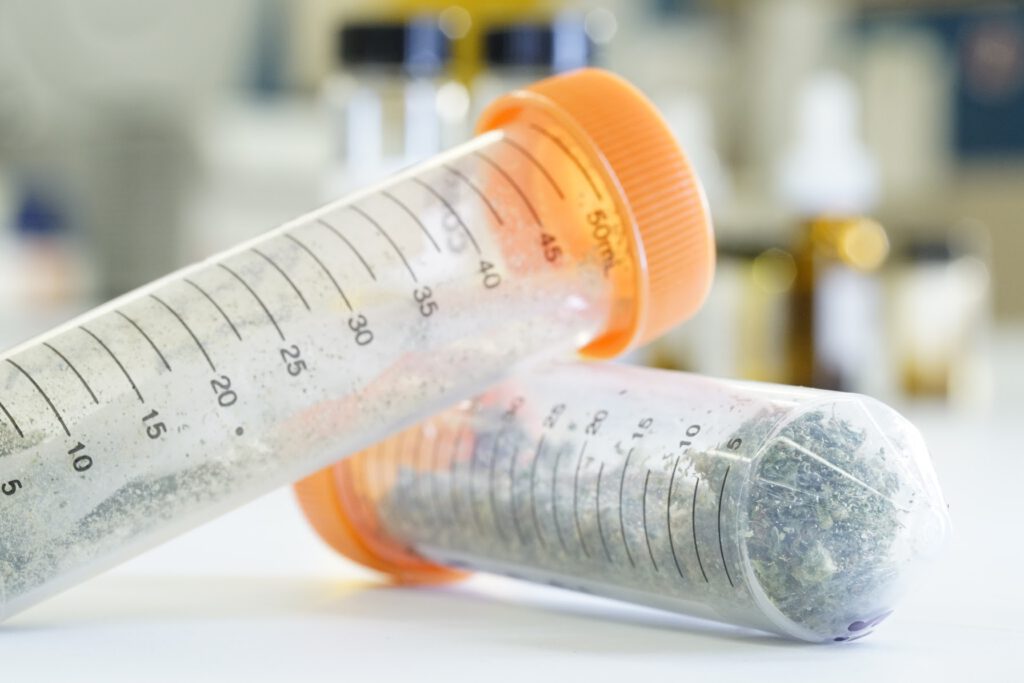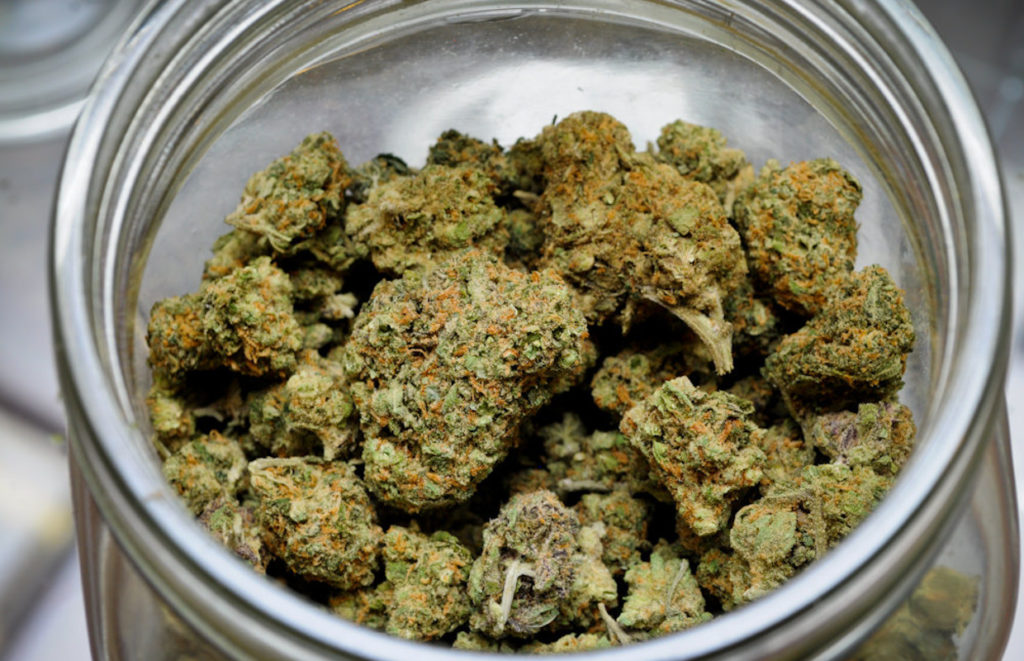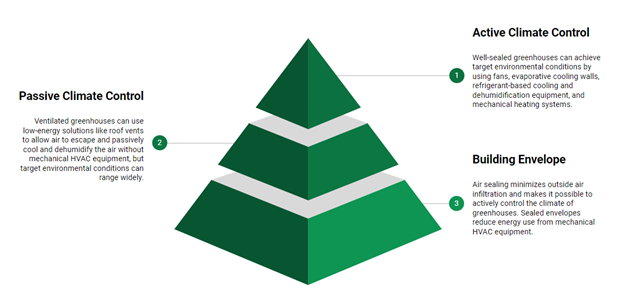All cannabis greenhouses take advantage of sunlight for plant growth, but building construction and climate control strategies can vary so much that some growers say that “if you visit one greenhouse, you have visited one greenhouse.” To optimize building systems for peak productivity, consider managing infiltration through building envelopes so cannabis can be sun-grown while photosynthesis can be optimized with active climate controls.
Seal the Envelope
Greenhouse construction materials range in performance, and influence how growers can control climates to maintain optimized environments for cannabis plant growth and development. The choices you make for building materials and controls strategies for sun-grown cannabis affect your ability to maximize yield and quality characteristics.
Greenhouse buildings are constructed in many different ways, and to describe them, it is useful to understand some building system terms. Thermal envelopes are sometimes referred to as a building’s skin, or shell; you can think of them like your greenhouse’s coat in the winter and sunscreen in the summer. Weatherization describes activities you can do to improve thermal envelopes. Weatherization activities include insulating , which minimize unwanted heat losses and gains, and air sealing, which reduces the infiltration of outside air. Insulation is rated using R-value (a higher value is better) or the U-value (the inverse of R-value, where a lower value is better). Air leakage from infiltration is rated using the number of air changes per hour (ACH, the volume of air moving through a greenhouse each hour described in terms of the size of your greenhouse) or CFMX, the cubic feet per minute at a pressure change of X Pascals (for example, CFM50 tests air leakage rates at a change in building pressure 50 Pa).
There are two major components to greenhouse envelope performance: external coverings and internal equipment. Greenhouse thermal envelope performance is dependent on the design and construction of the facility: building materials and their insulative quality, and the integrity of the envelope’s seal. Contact your local utilities and efficiency programs; air sealing and insulation projects may qualify for financial incentives in your region for new construction and retrofit projects.
Insulation
Greenhouse materials vary; popular covering types include rigid plastic, film plastic, and glass, and each can vary in cost, durability, light transmission, and insulation. Their insulative quality is dependent on the type of covering and its thickness. Rigid plastic products like polycarbonate, acrylic, and fiberglass are popular as they can feature multiple layers of walls which trap air for higher R-value. Film plastic is attractive due to its low cost, but provides no insulation. Some growers use two layers of film and inflate the house with a fan to maintain an air gap. Glass has varying insulation ratings, and can be very well sealed to the structure compared to plastic materials which experience high levels of thermal expansion, which increase infiltration.






